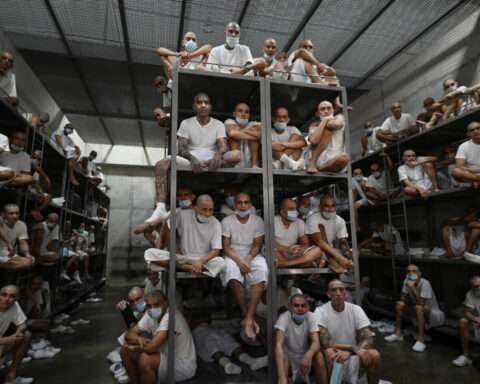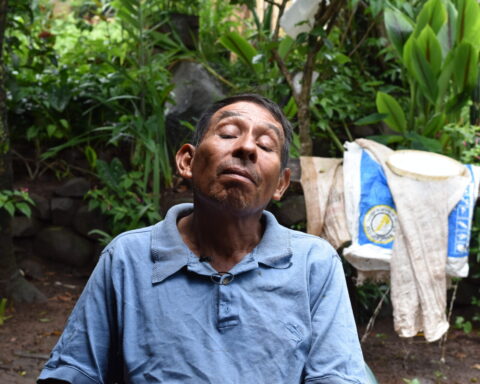Many have taken to the streets to protest a lack of action on climate issues, and the issue is receiving increasing attention from leaders of the Democratic party.
President-elect Biden’s climate plan, for example, expresses that “there is no greater challenge facing our country and our world.” The outgoing Trump administration, however, has not prioritized the same need for environmental sustainability.
For every new environmental regulation, the Trump administration has eliminated two prior environmental regulations while making questionable appointments at agencies critical to combatting climate change including the Bureau of Land Management and the National Oceanic and Atmospheric Administration (NOAA).
Democrats in the House have not taken the Trump administration’s apathy towards environmental degradation lightly, having held 29 hearings and sent 82 letters to oversee policy actions on related topics in just the 116th Congress alone.
Most of these letters have been sent to executive branch officials, and many hearing witnesses have also come from the administration. Identifying the backgrounds of non-executive branch individuals who are invited to testify at oversight hearings, however, can provide additional insight into Democrats’ priorities and highlight areas where they may be overlooking important and underrepresented perspectives.
Congressional hearings serve as an important component of congressional oversight efforts, especially as a tool to draw attention to particular issues and to get individuals on the record committing to take specific actions. They also allow for public interactions between members and witnesses that—even when they tend towards “gotcha” moments—are part of legislators’ representational responsibilities. Ensuring that a broad set of perspectives are represented is important, and rules and practices in the House provide the minority party with opportunities to ensure they have some say over witnesses. But evidence suggests that hearing witnesses are not nearly as diverse as they could be.
To examine these dynamics, we looked at data from 22 hearings during the 116th Congress, captured in the Brookings House Oversight Tracker, related to environment or energy policy that included testimony from at least one non-executive branch witness.[i] For each of these hearings, all non-executive branch witnesses were classified into one of eight categories based on their title and affiliated organization.[ii] Overall, these hearings featured 130 non-executive branch individuals, with witnesses representing advocacy groups and subject-matter experts from academic institutions being the most common non-executive invitees.
Public interest organizations, both national and local, play a prominent role in oversight hearings. Public interest advocacy groups can often provide testimony about issues and experiences facing large populations and broad groups. While climate change has broad consequences, environmental degradation creates disproportionate impacts across racial groups and geographies. Out of the 22 hearings addressing energy or environment issues, 73% had at least one witness from an advocacy organization, and in total, 32 witnesses came from advocacy organizations. Their testimony can promote a multi-disciplinary perspective that considers the political, social, and economic implications of environmental rules and policies. During a hearing on clean water regulations, the Southern Center for Environmental Law (SCEL) delivered testimony on water pollution, noting that the “EPA reported that more than 50 percent of the rivers and streams it assessed are impaired.” Organizations such as the SCEL are indispensable because of their resources, expertise, and coordination when environmental problems arise.
Groups often most harmed by energy and environmental problems—especially U.S. territories, Native nations, and Black Americans—are underrepresented in these oversight hearings. Though not monolithic and often intersecting, these groups have all historically faced obstacles to civic participation. Only 9% of non-executive branch witnesses represented one of these groups—two represented Native interests, seven represented Puerto Rico interests, and three witnesses spoke on behalf of other environmental justice communities. Six of the seven witnesses representing Puerto Rico’s interests testified in a hearing about Post-Hurricane Maria relief. Besides Puerto Rico, no other witnesses represented U.S. territories’ interests despite their increased vulnerability to the risks of climate change. Along the same lines, there were two oversight hearings on pipeline safety without representation from Native governments or indigenous parties despite them often being most impacted by pipeline developments and hazards. Congress also only heard from one non-affiliated witness who had been personally affected by the administration’s policies across the twenty-two hearings analyzed. The witness lived in upstate New York and testified about how PFAS, a toxic chemical substance, polluted their local waterways.
The benefits of including a broader range of voices in energy and environmental-related oversight hearings are numerous. It could help increase the influence of Native, Territorial, Black, and Latino communities in environmental decision-making. It would also put faces, names, and lived experiences to climate change as many, in both Congress and the general public, still assume that its impacts are distant and insignificant.
[i] Oversight hearings are identified using the methodology that can be found on the Brookings House Oversight Tracker page. Climate and Energy hearings were coded using the Policy Agendas Project codebook which is also outlined in the Oversight Tracker methodology.
[ii] The eight categories witnesses were coded into were as follows, 1) Academia & Education, 2) Business, 3) Local State and Tribal Government, 4) Campaign Staff, 5) Public Interest Advocacy, 6) Labor Unions and Trade Organizations, 7) Think Tanks, and 8) Personal Capacity.
Mohammed Memfis, Molly E. Reynolds, Jackson Gode -brookings.edu






